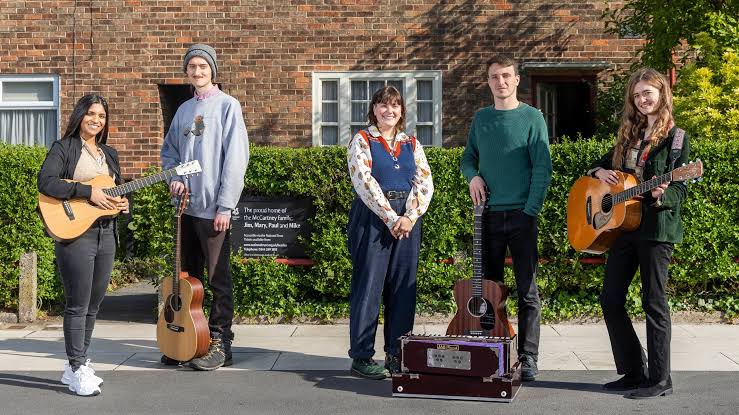On Forthlin Road in Liverpool, the rain falls with quiet reverence, as if it too remembers. There are no camera crews jostling for a shot, no screaming fans pressed against barriers. Just the soft drizzle of an English afternoon, the hum of passing cars, and the stillness of a street that once held a revolution in its modest walls.
Here, at number 20, the story of a legend began—not in fame or fortune, but in the slow, unglamorous rhythm of ordinary life. A terraced house, indistinct from its neighbors, was once the cradle of melodies that would reshape music history. It was here that Paul McCartney lived, and where he and John Lennon—young, unproven, and unaware of their coming impact—sat on the floor with guitars and notebooks, building songs out of dreams. The furniture was second-hand. The carpet was worn. But the air must have crackled with promise.
There’s something sacred in the silence now. A different kind of volume lingers in the space between raindrops—a whisper of harmonies once new, of lyrics scrawled in teenage script, of laughter, of hope. Forthlin Road doesn’t shout its significance. It doesn’t need to. The weight of what happened here is carried not by plaques or statues but by the simple fact that genius once occupied these walls.
For those who come quietly, who stand without flashbulbs or fanfare, it becomes clear: greatness often begins in the most ordinary places. And though the Beatles would go on to conquer the world, they first found their voice on this quiet street in Liverpool, where drizzle falls like a curtain, and history waits patiently behind a red-brick façade.


